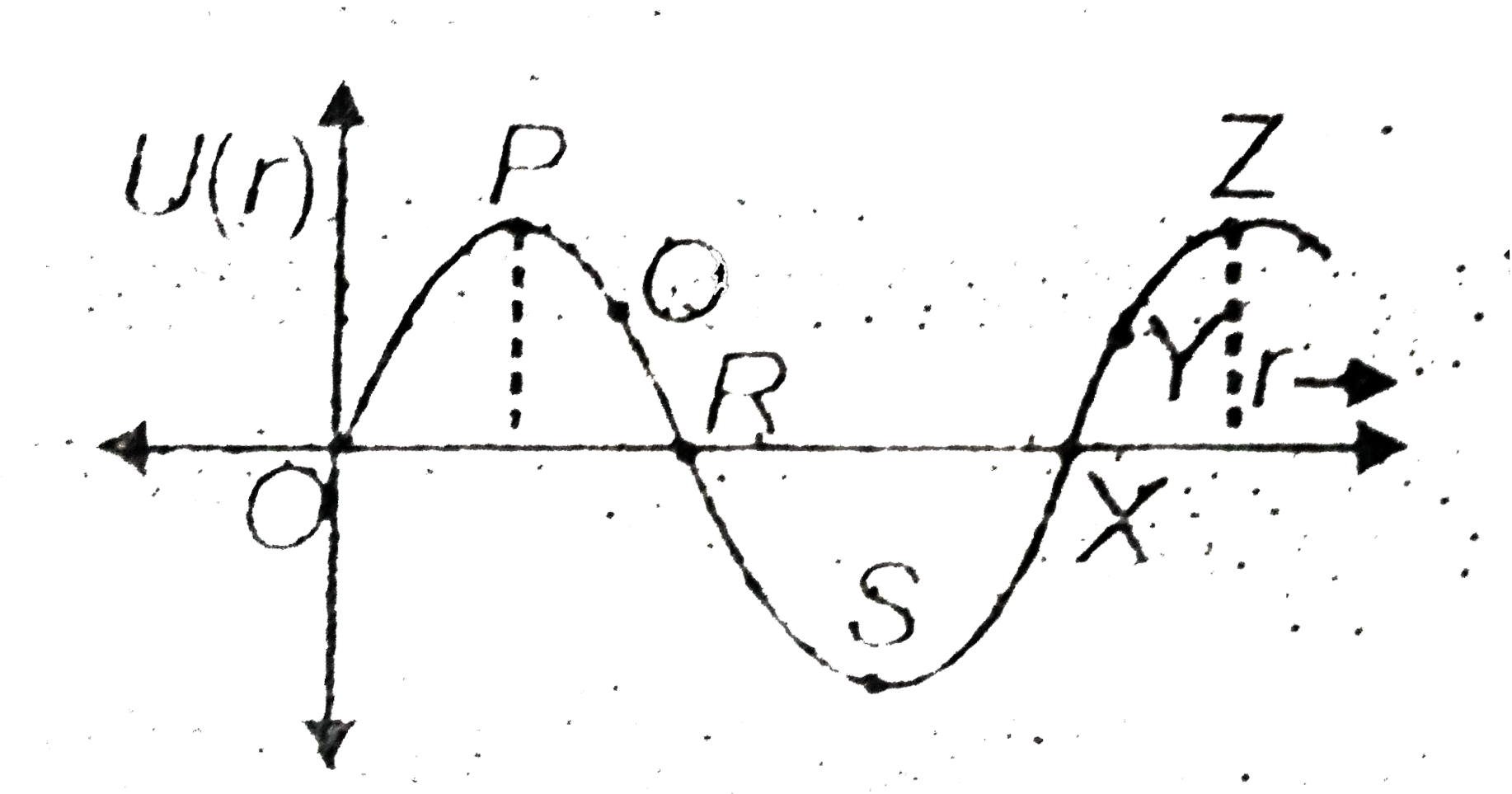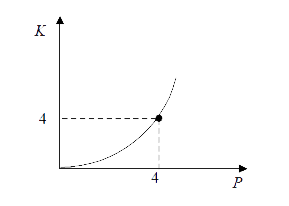In the figure shown the potential energy U of a particle is plotted its position 'x' from origin. Then which of the following statement is correct A particle at :
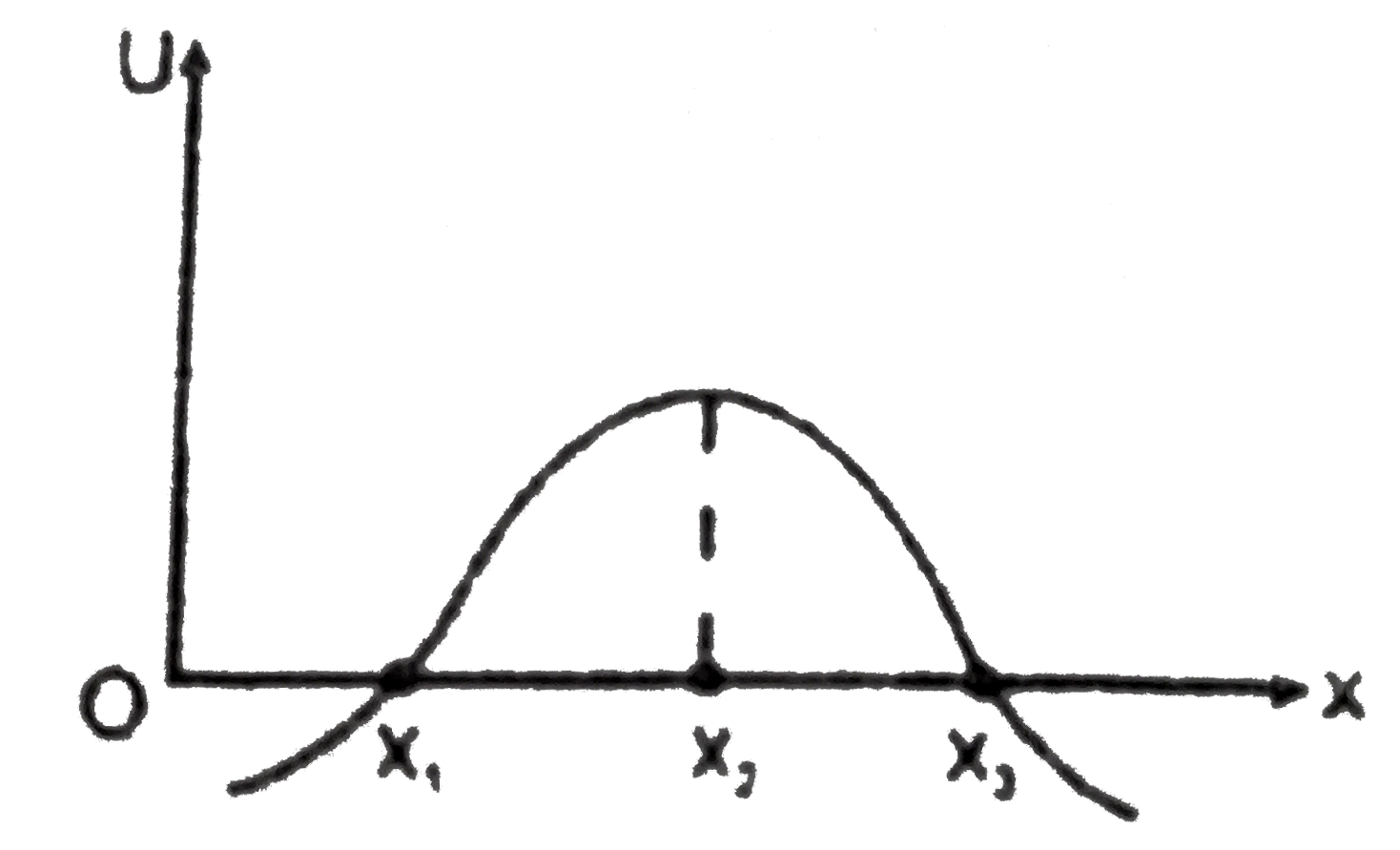
x1 is in stable equilibrium
x2 is in stable equilibrium
x3 is in stable equilibrium
none of these
The correct Answer is:D
x=x1 and x=x3 are not equilibrium positions because dudx≠0 at these points
x=x2 is unstable, as U is maximum at this point.
Topper's Solved these Questions
- BOOK - RESONANCECHAPTER - DAILY PRACTICE PROBLEMEXERCISE - DPP No.399videos
DAILY PRACTICE PROBLEM
- BOOK - RESONANCECHAPTER - DAILY PRACTICE PROBLEMEXERCISE - DPP No.4020videos
DAILY PRACTICE PROBLEM
- BOOK - RESONANCECHAPTER - DAILY PRACTICE PROBLEMEXERCISE - DPP No.379videos
DAILY PRACTICE PROBLEM
- BOOK - RESONANCECHAPTER - CURRENT ELECTRICITYEXERCISE - High Level Problems (HIP)21videos
CURRENT ELECTRICITY
- BOOK - RESONANCECHAPTER - ELECTRO MAGNETIC WAVESEXERCISE - Exercise 327videos
ELECTRO MAGNETIC WAVES
Similar Questions
Knowledge Check
- Question 1 - Select One
In the fig. The potential energy U of a particle plotted against its position x from origin. Which of the following statement is correct
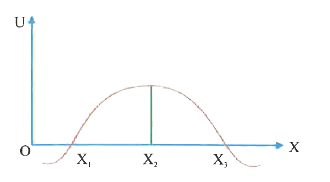 Aat x1 particle is in stable equilivriumBat x2 particle is in stable equilibriumCat x3 particle is in stable equilibriumDat x1,x2andx3 particle is in unstable equilibrium
Aat x1 particle is in stable equilivriumBat x2 particle is in stable equilibriumCat x3 particle is in stable equilibriumDat x1,x2andx3 particle is in unstable equilibrium - Question 2 - Select One
Potential energy of a particle at position x is given by U=x2−5x. Which of the following is equilibrium position of the particle?
Ax=0Bx=5Cx=2.5Dx=7.5 - Question 3 - Select One
Figure shows a plot of the potential energy as a function of x for a particle moving along the x-axis. Which of the following statement(s) is/are true?
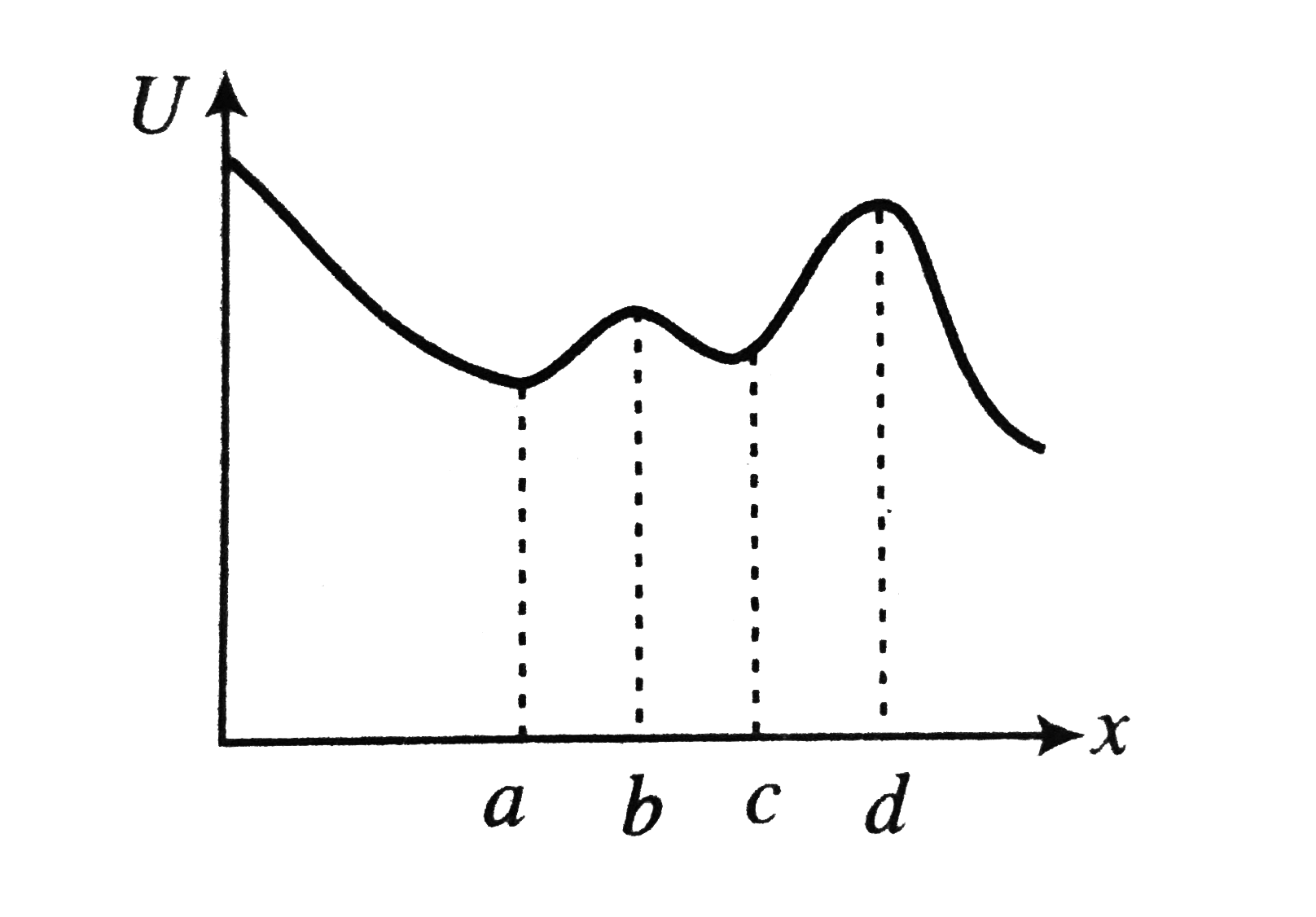 Aa, c, and d are points of equilibriumBa is a point of stable equilibriumCb is a unstable equilibrium pointDAll of the above
Aa, c, and d are points of equilibriumBa is a point of stable equilibriumCb is a unstable equilibrium pointDAll of the above
Figure shows the velocity of a particle moving on x-axis.

Which of the following statement is correct for the interval shown in graph?View SolutionA particle is constrained to move along x axis under the action of a conservative force. The potential energy of the particle varies with position x as shown in the figure. When the particle is at x = x0, it is given a kinetic energy (k) such that 0 lt k lt 4U0 (a) Does the particle ever reach the origin? (b) Qualitatively describe the motion of the particle
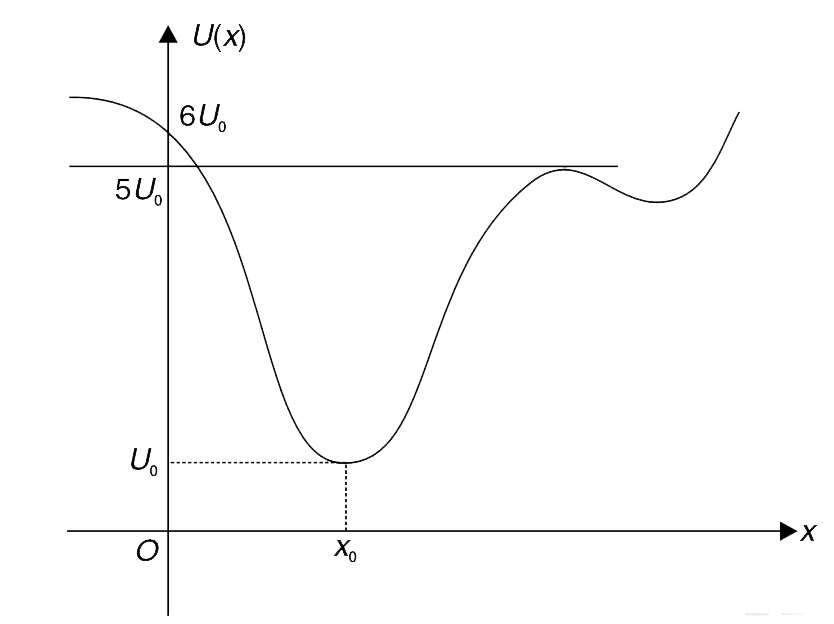 View Solution
View SolutionPotential energy of a particle at position x is given by U=(x2−4x)J. Which of the following is equilibrium position of the particle?
View SolutionThe potential energy of a particle (Ux) executing SHM is given by
View SolutionPotential Energy U(x) and associated force F(x) bears the relation F(x)=−ddxU(x).
Dependence of potential energy of a two−particle system separation x between them is shown in the following figure.
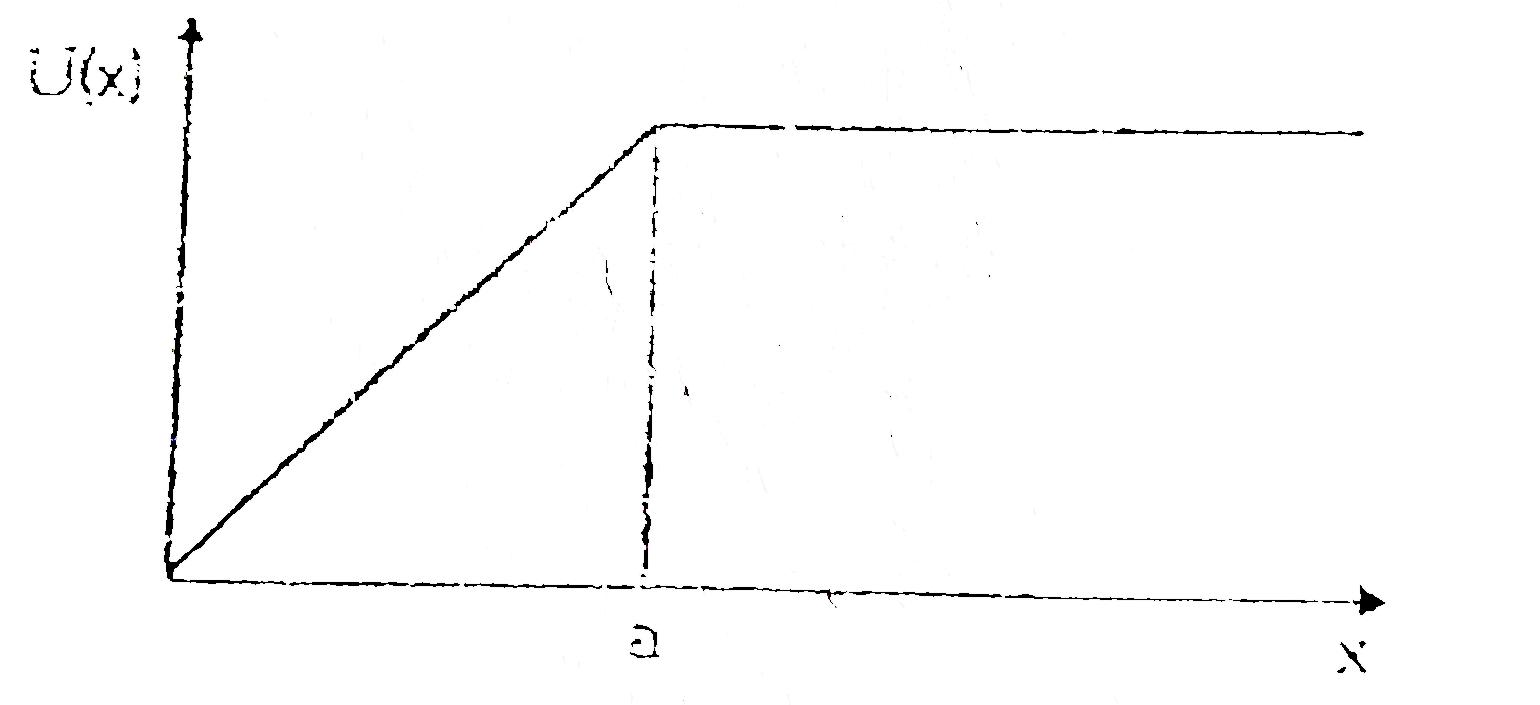
Which of the following graphs shows correct variation in assoicated force F(x) with x?View Solution


